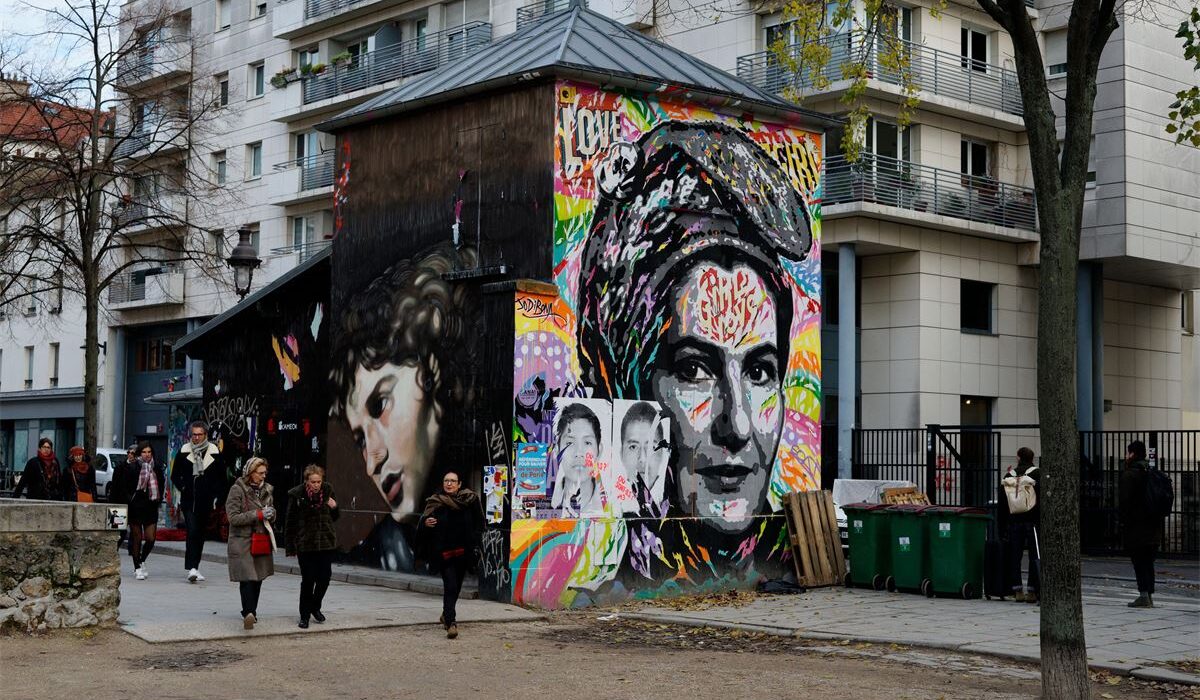The tourists and EU bubble workers who throng the streets of Belgium’s capital tend not to associate the European Parliament with contemporary art. And yet, guests who follow the path through the European Union’s history at the Parliament’s visitor centre, and persevere past the videos, interactive games and floor-to-ceiling screen showing headshots of Members of the European Parliament, arrive at the Parliament’s temporary exhibition Art Herstory.
Before finding themselves face-to-face with Croatian artist Sanja Ivekovic’s subversive Women’s House, visitors are introduced to the temporary exhibition’s raison d’être: a desire to “highlight the clear importance and relevance of female perspectives”.
It’s a mission that is also in line with the new and improved overall acquisition strategy behind the European Parliament’s contemporary art collection, aimed at ensuring its gender balance.
Established in 1980 by Simone Veil, the collection was born out of Veil’s desire to bring together artworks from the 10 Member States that composed the European Economic Community at that point.
For Veil, the collection needed to prioritise the work of young artists who had achieved recognition from art critics, museums and public institutions.
How, exactly, young artists were supposed to have already garnered formidable acclaim so early on in life, Veil did not specify – a paradox that won’t surprise anyone familiar with the requirements for entry-level positions at the EU institutions.
At Veil’s initiative, a first four-year programme was established to purchase artworks from the Economic Community countries and a working group was created to oversee the acquisitions.
From 2019, the preselection process has been handled by the Parliament’s liaison offices (EPLOs) in the Member States, after consultations with national art experts. The EPLOs propose a selection of works from their countries, which is then reviewed by a committee of curators.
In 2019 a series of selection criteria was also drafted to streamline the selection process. Today, the permanent collection boasts over 500 paintings, sculptures and other works of contemporary art, which are spread across the hemicycle in Brussels, the Parliament building in Strasbourg and the Parliament’s liaison offices in the Member States. Temporary, thematic exhibitions like Art Herstory on the other hand are organised on an ad hoc basis.
“We want artworks dated 2000 onwards,” Oscar Muñoz, the European Parliament administrator in charge of the collection, says about the recently adopted selection criteria.
“We wanted to create a shift by showcasing techniques besides only painting and sculpture, which represented the majority of the collection until that point, giving space to modern techniques like digital prints.”
While the collection seeks to keep up with the times, one acquisition requirement has remained the same since its early days – the works must present a “connection to the European values and the EU project, and to subjects dealt with here in Parliament, such as gender equality, environmental sustainability, and the defence of human rights.”
After the committee of curators has reviewed the works proposed by the EPLOs, they recommend a selection for purchase to the College of Quaestors, with the President taking the final decision based on the Quaestors’ suggestions, Muñoz explains.
Sure, it might be easier to make it into the Parliament’s collection than into the Centre Pompidou, but the process artworks go through to be shown at the European Parliament is nevertheless lengthy and bureaucratic – in short, emblematic of the EU processes.

